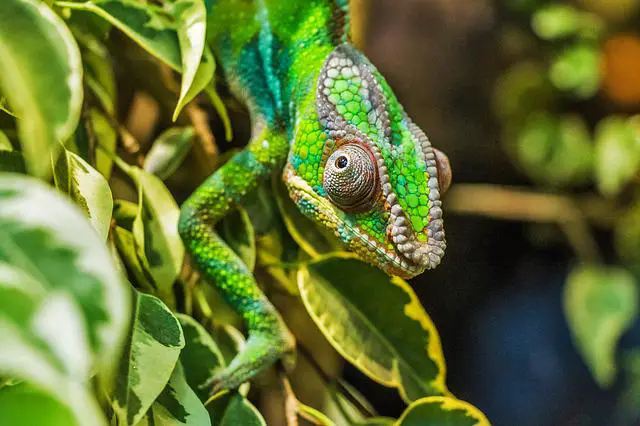Bonding with a chameleon may seem impossible, but it’s not as difficult as you might think! In this blog post, we will discuss the basics of bonding with these fascinating creatures. We’ll cover everything from housing and feeding to handling and training. By following our tips, you’ll be able to form a strong bond with your chameleon in no time.
Introduction
Chameleons are unique creatures that have the ability to change their color in order to blend in with their surroundings. They are also known for being solitary creatures that do not typically interact with other animals.
However, there are some people who have been able to form bonds with chameleons. In order to do so, it is important to understand the needs of these reptiles.
Chameleons require a warm and humid environment in order to thrive. They also need plenty of hiding places and perches so that they can feel safe and secure.
In addition, it is important to handle them gently and slowly so that they do not feel threatened. With patience and understanding, it is possible to form a bond with a chameleon.
How to form a relationship with a Chameleon
Chameleons are unique creatures that make interesting and low-maintenance pets. While they are not typically cuddly, they can be hand-tamed with patience and regular handling. Here are a few tips for forming a bond with your chameleon:
1. Give them time to adjust: Chameleons need time to feel comfortable in their new environment and with their new human friends. Give them at least a week to settle in before handling them.
2. Handle them regularly: Once they have settled in, handle them every day, even if it’s just for a few minutes. This will help them get used to your scent and your touch.
3. Feed them by hand: One of the best ways to form a bond with your chameleon is to feed them by hand. They will soon associate you with food and come to trust you.
4. Talk to them: Chameleons are not known for being vocal, but they can still benefit from hearing the sound of your voice. Talk to them softly, and they may even come to recognize your voice over time.
By following these simple tips, you can develop a strong bond with your chameleon.
Housing and feeding your chameleon
Chameleons come from warm climates and need a special habitat in order to thrive. When setting up a habitat for your chameleon, it is important to provide plenty of places for your pet to hide.
This can be achieved by using live plants or artificial foliage. It is also important to maintain a tight lid on the enclosure, as chameleons are excellent climbers and escape artists.
In terms of diet, most chameleons are omnivorous and will eat a variety of insects, such as crickets and mealworms. It is important to dust the insects with a calcium supplement before feeding them to your chameleon. With proper care, housing, and diet, your chameleon will be a fun and exciting pet for years to come.
Handling and training your chameleon
A chameleon is a reptile that is native to Africa, Asia, and Madagascar. They are known for their ability to change their skin color in order to camouflage themselves in their environment. Chameleons are also known for their long tongues, which they use to catch insects. There are over 150 different species of chameleons, and they come in a variety of sizes and colors.
If you are thinking about getting a chameleon as a pet, there are a few things you need to know about handling and training them.
Chameleons are delicate creatures, so it is important to handle them with care. When picking up a chameleon, be sure to support its body from underneath. Avoid holding them by the tail, as this can cause stress and injury.
Chameleons are also easily frightened, so it is important to move slowly and calmly around them. Once you have picked up your chameleon, you can then begin to train them.
Chameleons can be trained to do simple tricks, such as following a finger or sitting on a shoulder. These tricks can be useful in handling them, as well as in keeping them entertained.
Conclusion
As any chameleon owner knows, these unique creatures can make wonderful pets. They are relatively low-maintenance, and their calm demeanor makes them ideal for those who are new to reptile ownership.
However, forming a bond with a chameleon can sometimes be a challenge. Here are a few tips to help you create a strong connection with your pet.
First, take the time to handle your chameleon regularly. This will help them get used to your scent and presence, and it will also allow you to assess their health on a regular basis.
Second, offer them a variety of foods, both live and processed. This will not only ensure that they are getting the nutrients they need, but it will also give them something to look forward to at mealtime. Finally, provide them with plenty of hiding spots and perches.
Chameleons are naturally shy creatures, and they will feel more comfortable if they have somewhere to retreat when they feel overwhelmed. By following these tips, you can create a strong bond with your chameleon that will last for years to come.









